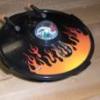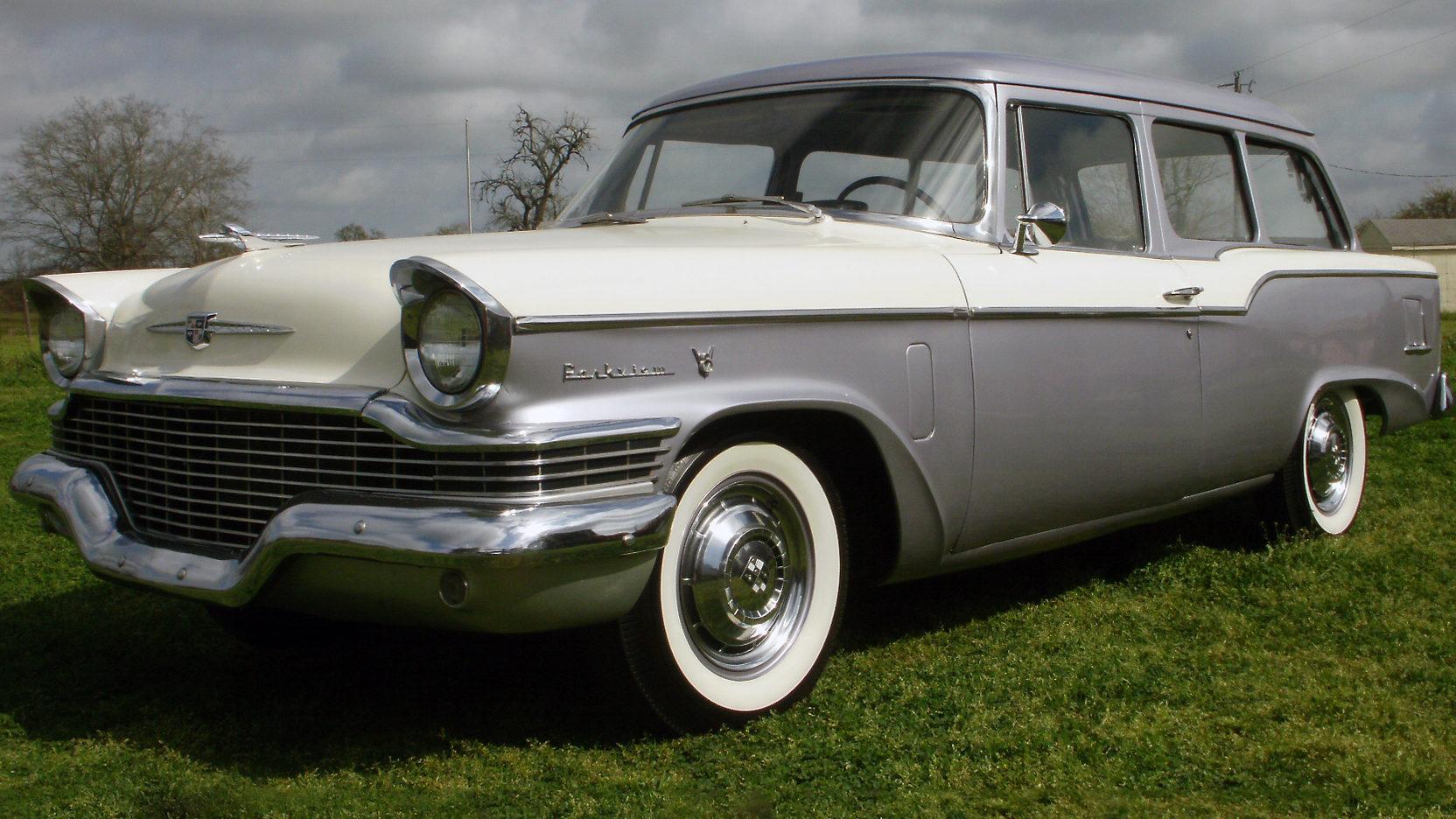-
Posts
1,348 -
Joined
-
Last visited
Content Type
Profiles
Forums
Events
Gallery
Everything posted by mr moto
-
A beautiful and most unusual build! Is that from a kit, resin, or ????
-
How about a '57 Studebaker Parkview? Not likely to happen but I want it! This thread really shows up some huge voids in cars that should have been kitted by now but haven't been - whether as station wagons or any other versions. For instance, it's a sin that are no mid-century Mercurys or Dodges of any kind kitted. Look thru this thread and you'll see many other examples.
-

Testors- Model Master enamel accelerator
mr moto replied to GEORGE LEMIRE's topic in Model Building Questions and Answers
Lacquer thinner in enamels is great for spraying but not for brushing. Woodworkers and painters use something called "Japan drier" to speed the drying of enamels use for brushing. Personally, I've never used it so I can't give you any advice but it's well known so I'm sure you could Google up some information on the proper use. It's available at most hardware stores, Home Depot, etc. where you can buy it by the quart or larger and I think some art supply companies sell it in smaller bottles (Grumbacher maybe) so Hobby Lobby may also carry it. -

Trying to identify these built ups
mr moto replied to Jonathan's topic in Model Building Questions and Answers
I don't know the kit manufacturer but the top car is no Lotus. It appears be a McLaren M7A (Google it) with the wing installed backwards. -

Matching Ford Sunset Coral
mr moto replied to Redisetta's topic in Model Building Questions and Answers
Duplicolor primer works great with MCW paints and MCW paints are excellent. -

Where Did All The Krylon Go?
mr moto replied to oldcarfan's topic in Model Building Questions and Answers
I don't have an answer but I did notice locally that Hobby Lobby has almost no Krylon now. They used to have a large selection. -
BTW, did anybody notice that in the first photo that Cobraman posted there are whitewall pie-crust slicks on the TRAILER!
-
A great big "Thank you" to everybody for the appreciation of my build and a very special thanks to Cobraman for posting those photos. I had never seen anything like this before but I suspected that somebody must have tried it back when two engines seemed liked a good idea. Thanks again to all!
-
My version of a "Freight Train" style Fiat competition coupe. I'm pretty sure that nothing like this ever existed but I didn't let that stop me! Basic components: The chassis is the Dragmaster Mark IV from Revell's Mickey Thompson "Attempt 1" extended out to a 130" wheelbase with Evergreen rod. The body, engines, wheels, fuel tank, chute pack, etc. came from AMT's Double Dragster. Tires from Modelhaus. The stacks are a (discontinued) Parts Pak made by Round 2. Paint is Tamiya French Blue and Brilliant Orange with Duplicolor Chevy engine red on the engines (of course!) and various shades of Alclad. All the decals are home made. The photos are a little dark but here they are. Thanks for looking!
-

Tires. Which Would You Choose?
mr moto replied to StevenGuthmiller's topic in Model Building Questions and Answers
BTW, my earlier comment about what was happening in the early 60's was just for the historical record. You always get to build your model in your own way! -
Very fine build of one of my personal favorites. I agree it looks right in red!
-
Well! That's a bummer! ?
-

Tires. Which Would You Choose?
mr moto replied to StevenGuthmiller's topic in Model Building Questions and Answers
From someone who was there...by 1964 wide or even medium whites were for squares and old fogies although a lot of them were getting recapped as cheater slicks. The fashion on the street was narrow whites. It happened fast. Starting in '62 some cars had the narrows. By the time the 63's hit the new car dealers' lots they were almost all wearing narrows. -
That's a great looking build and a really classic kit. You have to wonder if maybe the tooling still exists and Atlantis has it.
-
There is at least one more in this series. It's a Ferrari and I think they called it a "Tiger Shark". I think all of these would be great subjects for box art builds. Sort of like re-creating a relic of an ancient time.
-
Thanks, John. The white paint is Duplicolor Bright White and I think the blue is an old Krylon color. I clear coated both after applying the decals (to protect the decals from slot racing wear and tear) but I'm not sure what the clear was. Maybe Testors Wet Look. The front vents are just home-made decals made from a photo of the real thing that I found on the net. I figured that was good enough for slot racing. I don't know if you've started assembling yours yet but after you get the multi-piece body together, you'll see that that's about the last place you want to try cutting an opening and installing a small grille. The decals were so much easier!
-
This is a great thread! I'm familiar with many of the original kits so I know just how much hard work went into making these cool looking models. I've got a couple of builds to contribute, also. First is this Glencoe 1/72 Jag xk-120. Detail is seriously lacking but it displays okay. And this is what I did with my Cunningham Phantom kit. It's a 1/32 slot car conversion modeled after the car that Briggs Cunningham drove at Le Mans in 1951.
-

Mack R-Model Hammill Construction
mr moto replied to DRIPTROIT 71's topic in Model Trucks: Big Rigs and Heavy Equipment
Your realism is amazing! It just doesn't look like a model. You have the experience to know what's right and the skill to recreate it. Fabulous model building. -

Looong & Looow 33 Ford Roadster... "à la Coddington"
mr moto replied to Claude Thibodeau's topic in Model Cars
I love that it looks so much more than functional. It looks like the hinge that belongs on that car. -

Looong & Looow 33 Ford Roadster... "à la Coddington"
mr moto replied to Claude Thibodeau's topic in Model Cars
That is just TOO fine! It sets a standard for others to aspire to. Is the hood hinge also a scratch-built piece? -
FYI, the 1965 AMT Coronet that was tooled by MPC (that's the one that you have) is not the same as the AMT '65 Coronet that is currently available from Round 2. That one was tooled by Polar Lights. There's still a chance that the hood will fit or be close enough to adapt and it might be your best bet. The original AMT/MPC version is a very rare and much sought after bird.
-

Making tires look aged.
mr moto replied to James Maynard's topic in Model Building Questions and Answers
Just an idea that I have not tried but Hob Lob sells a rock tumbler for about $25. My daughter had one when she was little but I don't think it's still around for me to try. Anyway, it seems that you could tumble some tires for a short time with an appropriate grit and get all the shine off of them. Cheaper than a sandblasting rig. -

model car kit Polar Lights 1:25 Volkswagen Beetle Coca Cola Snap Kit
mr moto replied to Lee_S's topic in Model Cars
Excellent work and fun to look at!- 20 replies
-
- volkswagen
- vw
-
(and 1 more)
Tagged with:




